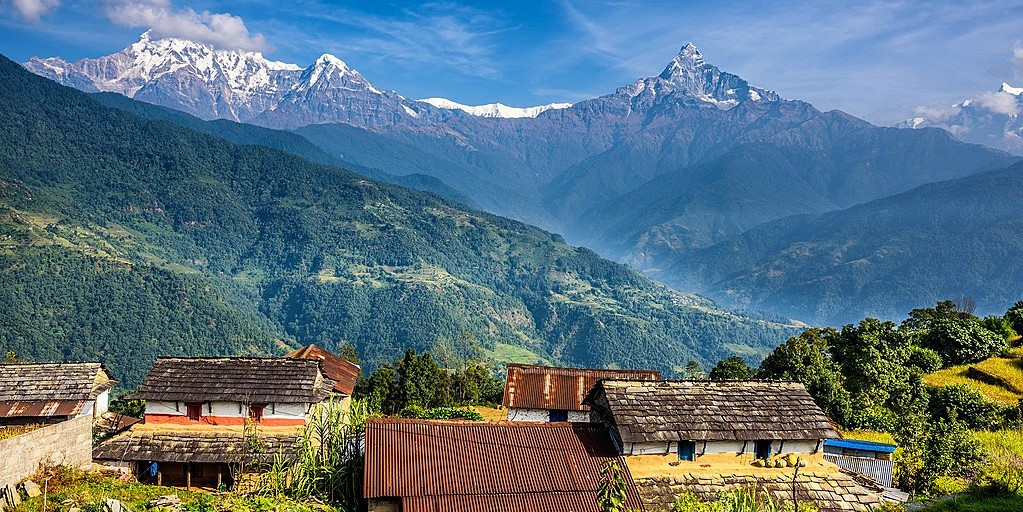Best time to Visit Nepal/ Seasonal Calendar for Visiting Nepal
Spring (March to May)
-
Activities: high-altitude trekking, mountaineering, cultural tours, wildlife viewing
-
Highlights: rhododendron blooms, clear skies, moderate temperatures, Holi festival, Buddha Jayanti.
-
Best Regions: Everest and Annapurna regions for trekking; Kathmandu Valley for cultural tours.
Summer/Monsoon (June to August)
-
Activities: cultural tours, low-altitude trekking, rain shadow area treks, wildlife viewing.
-
Highlights: lush green landscapes, vibrant paddy fields, and local festivals like Janai Purnima and Nag Panchami.
-
Best Regions: Mustang and Dolpo for trekking; Kathmandu and Pokhara for cultural experiences.
Autumn (September to November)
-
Activities: high-altitude trekking, cultural tours, wildlife viewing, mountain biking
-
Highlights: Best mountain visibility, stable weather, major festivals like Dashain and Tihar.
-
Best Regions: All major trekking routes (Everest, Annapurna, Langtang), Chitwan National Park for wildlife
Winter (December to February)
-
Activities: low-altitude trekking, cultural tours, wildlife safaris
-
Highlights: snow-covered mountains, fewer crowds, festivals like Lhosar, and a pleasant climate in the lowlands.
-
Best Regions: Ghorepani Poon Hill, Kathmandu and Pokhara Valleys, Chitwan National Park
Tips:
-
Festivals: Check the exact dates as they vary each year based on the lunar calendar.
-
Weather Variations: Be prepared for weather changes, especially in mountainous regions.
-
Booking in Advance: Recommended for autumn and spring due to high demand.
Autumn: The Prime Time for Exploration
Nepal's autumn season, from September to November, is widely recognized as the peak season for Nepal travel, offering the most favorable Nepal weather for trekking. This period provides optimal mountain views in Nepal, making it the best time to visit Nepal for Everest Base Camp trek and other Himalayan trekking adventures. With clear skies and comfortable temperatures, autumn is the ideal time to experience Nepal's cultural tours and immerse yourself in the country's breathtaking natural beauty.
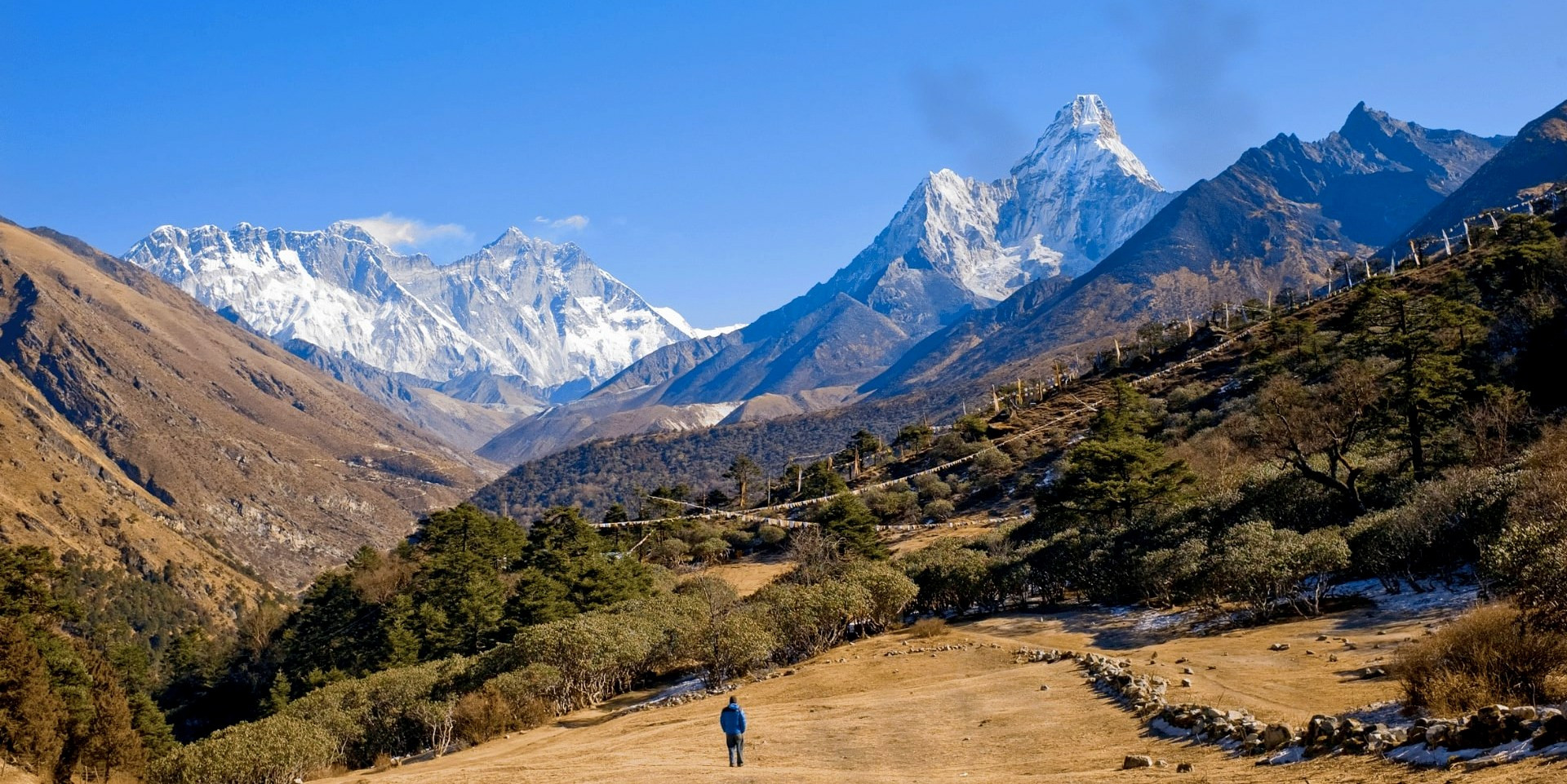
Why Autumn Stands Out:
Exceptional Trekking Conditions:
-
Clear Skies and Visibility: After the monsoon season, the skies clear up, revealing spectacular views of the Himalayan range.
-
Stable Weather: The weather is predominantly stable and dry, with minimal rainfall, making it ideal for trekking.
-
Moderate Temperatures: Days are comfortably warm, while nights are cool but not freezing, especially at higher altitudes.
Peak Season for Major Treks:
-
Popular Routes: This is the preferred time for treks to Everest Base Camp, the Annapurna Circuit, Langtang Valley, and many others.
-
Safer Trails: The trails are generally dry and safe, reducing the risk of landslides and other monsoon-related hazards.
Cultural Festivities:
-
Vibrant Festivals: Autumn coincides with some of Nepal’s most important festivals, like Dashain and Tihar. These festivals offer a glimpse into the rich cultural tapestry of Nepal.
-
Local Interaction: It’s an excellent time to interact with locals, who are often in a festive mood and more engaged in cultural practises.
Tourist Friendly:
-
Infrastructure and Services: With autumn being the peak tourist season, all trekking and tourist facilities, from lodges to guide services, are fully operational.
-
Social Experience: It’s a great time for those who enjoy the social aspect of trekking, as the trails and teahouses are lively with international trekkers.
- Photographic Opportunities:The clear weather and the post-monsoon freshness make autumn an exceptional time for photography, capturing the vivid landscapes and cultural richness of Nepal.
- Wildlife Viewing: In regions like Chitwan National Park, the end of the monsoon season brings about optimal conditions for wildlife viewing.
Considerations:
-
Crowds: During the peak season, popular trekking routes can be quite crowded. Booking in advance is advisable.
-
Price Surge: Prices for flights, accommodation, and trekking services may be higher during this peak season.
Autumn in Nepal, spanning September to November, is the premier Nepal trekking season, attracting trekkers and mountaineers with its rejuvenating atmosphere and excellent weather in Himalayas. This period offers clear skies and comfortable temperatures, perfect for Everest Base Camp treks and Annapurna Circuit treks, making it the best time to visit Nepal for hiking. Alongside ideal conditions for Himalayan trekking, autumn is also a time of vibrant Nepal festivals, providing rich Nepal cultural experiences. Whether you're seeking panoramic mountain views in Nepal or immersive cultural tours, autumn delivers an unparalleled Nepal travel experience, making it the optimal time to visit Nepal for a fulfilling adventure.
Spring: A Season of Blooms and Treks
Spring in Nepal, from March to May, is renowned for its vibrant landscapes and optimal Nepal climbing season. This period sees the Himalayas come alive with blooming rhododendrons, creating a spectacular display of color, making it a prime time to visit Nepal for trekking. The pleasant Nepal weather in spring offers excellent conditions for Annapurna Circuit treks and other Himalayan trekking adventures. It's considered one of the most beautiful times to experience Nepal's natural beauty, making it a favored Nepal travel season for nature enthusiasts and trekkers alike.
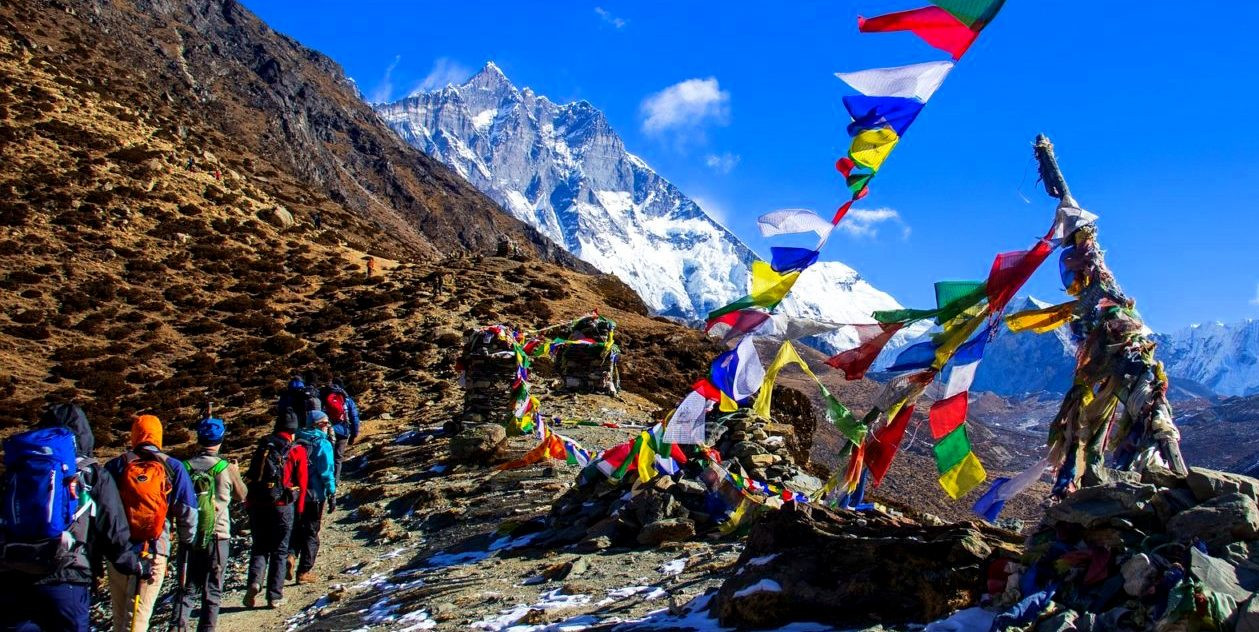
Why Spring is Special in Nepal:
Flourishing Nature:
-
Rhododendron Blooms: The hills and lower mountain slopes are adorned with colorful rhododendrons, Nepal’s national flower, creating picturesque trekking trails.
-
Green Landscapes: The environment is fresh and green, a stark contrast to the post-winter landscapes.
Ideal Trekking Conditions:
-
Pleasant Weather: Spring brings mild temperatures, making it comfortable for high-altitude treks.
-
Good Visibility: While not as clear as in autumn, the skies are usually clear enough for good mountain views.
-
Peak Climbing Season:
-
Mountaineering Expeditions: This is a prime time for expeditions to Everest and other high peaks, as the weather conditions are favorable.
-
Stable High-Altitude Conditions: Longer daylight hours and stable weather patterns make it safer and more enjoyable for climbers.
- Wildlife Viewing: With the onset of warmer weather, wildlife in national parks like Chitwan becomes more active, enhancing the chances of sightings.
Cultural Insights:
-
Local Festivals: Spring is marked by several festivals, including the famous Holi, the festival of colors, and Buddha Jayanti, celebrating the birth of Buddha.
-
Vibrant Atmosphere: The festive mood and cultural celebrations add an extra layer of experience to your visit.
-
Photographic Opportunities: The lush landscapes and colorful flora present excellent opportunities for photography enthusiasts.
-
Fewer Crowds: While still a popular time, spring typically sees slightly fewer trekkers than autumn, offering a more solitary experience on some trails.
Considerations:
-
Variable Weather: Spring weather can be more unpredictable than autumn, with occasional showers as the season progresses.
-
Allergy Awareness: For those sensitive to pollen, the blooming season can sometimes trigger allergies.
Spring in Nepal is a symphony of colours and life, offering an excellent balance of good trekking conditions, natural beauty, and cultural richness. It's a season that caters not just to adventure seekers but also to nature lovers and cultural enthusiasts. The temperate weather, fewer crowds, and the natural splendor of spring make it an appealing time for those looking to experience the diversity of Nepal in a relatively tranquil setting. Whether you're trekking through the rhododendron forests or participating in vibrant festivals, spring in Nepal is a time that promises both adventure and awe-inspiring beauty.
Summer/ Monsoon: A Lush Perspective
Summer in Nepal, coinciding with the Nepal monsoon season from June to August, offers a distinct and verdant perspective of the Himalayas. While often avoided for traditional Himalayan trekking, this period showcases Nepal's lush landscapes and provides unique Nepal cultural experiences. The Nepal weather in summer transforms the terrain, creating vibrant scenery and offering a different side of Nepal's natural beauty. Though Nepal trekking permits might be less in demand, summer allows for deeper cultural immersion and exploration of regions less crowded during peak seasons. It's an opportunity to experience a different, rain-kissed Nepal.
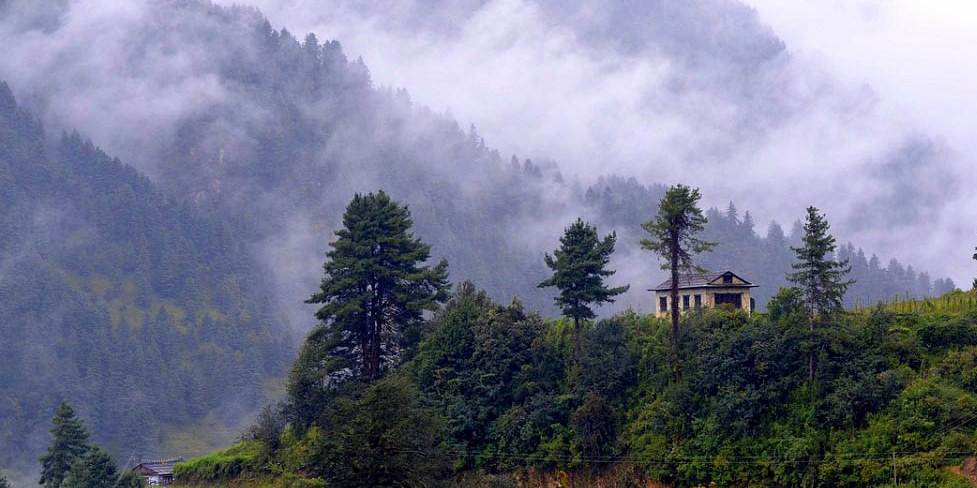
Why Summer/Monsoon is a Time of Unique Beauty:
Lush and vibrant landscapes:
-
Rain-Fed Greenery: The monsoon rains transform the landscape into a lush green paradise, ideal for photographers and nature enthusiasts.
-
Waterfalls and Rivers: Swollen rivers and numerous waterfalls become spectacular sights during this season.
Cultural Immersion:
-
Local Festivals: Unique festivals like Janai Purnima and Nag Panchami occur during the monsoon, offering a glimpse into the rich tapestry of Nepal’s cultural life.
-
Rice Planting Season: The paddy planting season, a significant agricultural event, can be a culturally enriching experience for visitors.
Less Crowded:
-
Quiet Trekking Trails: Popular trekking routes are less crowded, providing a more solitary and serene experience.
-
Authentic Interaction: With fewer tourists, interactions with locals can be more authentic and personal.
- Wildlife Viewing: Active Wildlife: In areas like Chitwan National Park, the lush vegetation supports a rich array of wildlife, which can be more active and visible during the monsoon.
- Valley Treks and Tours:Lower Altitude Treks: While high-altitude treks may be challenging, lower altitude treks in regions like Mustang, which lies in the rain shadow, remain accessible and enjoyable.
Lower Costs:
Considerations:
-
Travel Disruptions: Heavy rains can cause landslides and travel disruptions; it's important to plan with flexibility.
-
Trekking Challenges: Trails can be slippery and leeches are common; appropriate gear and preparation are essential.
-
Health Precautions: The monsoon season can see a rise in mosquitoes and related diseases, so precautions should be taken.
The Nepal summer season, during the monsoon months, offers a distinctive Nepal travel experience away from the crowded trekking seasons. This period showcases Nepal's natural beauty through vibrant greenery and lively Nepal cultural activities. While Nepal trekking permits may be less utilized, travelers can enjoy a quieter, more intimate side of Nepal, rich in cultural interactions. The Nepal monsoon season reveals lush landscapes and allows for exploration of less-traveled regions, making it an ideal time for those seeking unique Nepal cultural tours and off-the-beaten-path experiences. It's a chance to discover a different, more personal Nepal, distinct from the popular Himalayan trekking routes.
Winter: A Quiet Retreat for Solitude Seekers
Winter in Nepal, from December to February, provides a serene and less crowded Nepal travel experience, offering a peaceful retreat from peak season tourism. This Nepal off-season allows for quiet exploration of Nepal's cultural tours and diverse landscapes, providing a unique perspective on the country. While Nepal trekking permits for high-altitude treks might be limited due to Nepal weather in winter, lower-altitude regions and cultural sites remain accessible, offering opportunities for peaceful exploration. This period is ideal for those seeking solitude and a different, more tranquil side of Nepal, away from the bustling Himalayan trekking crowds.
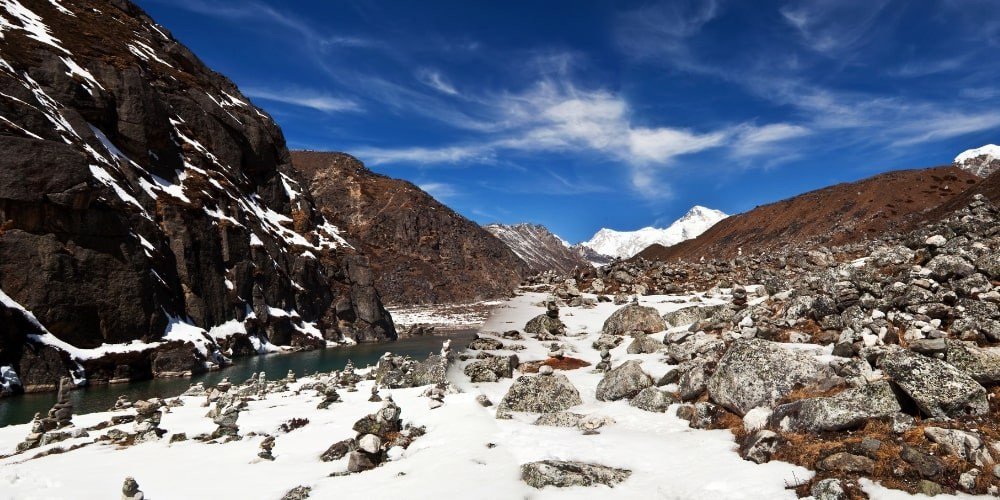
Why Winter is a Unique Time to Visit:
Peaceful Trekking Experience:
-
Less Crowded Trails: Popular trekking routes like the Everest Base Camp and Annapurna Circuit are much quieter, providing a more solitary experience.
-
Clear Skies: Despite the cold, the skies are often clear, offering stunning views of the snow-capped Himalayas.
Lower Elevation Treks: Treks at lower elevations, such as Ghorepani Poon Hill, can be more comfortable and equally rewarding.
Cultural Insights:
-
Local Life: With fewer tourists, winter offers deeper insights into the local way of life in Nepal.
-
Festivals: Although fewer than in other seasons, unique festivals like Lhosar (Tibetan New Year) add cultural richness to a winter visit.
- Wildlife Viewing: Easier Spotting: In national parks like Chitwan, the thinner vegetation and fewer water sources can make wildlife easier to spot.
Photography Opportunities:
-
Stark Landscapes: The contrast of the snow against the barren trees and hills provides a unique photographic landscape.
-
Golden Light: The winter light, especially during the golden hours, can be magical for photographers.
Relaxed Travel:
-
No Rush: The off-peak season means less pressure on bookings for flights, accommodations, and tours.
-
Calm Atmosphere: Cities like Kathmandu and Pokhara are less crowded, allowing for a more relaxed exploration.
-
Cost-Effective Travel: Lower Prices: Many hotels and service providers offer off-season discounts, making it a more budget-friendly time to visit.
Considerations:
-
Cold Weather: It can be significantly cold, especially at higher altitudes, requiring proper winter gear and preparation.
-
Shorter Days: Daylight hours are shorter, so planning your activities accordingly is important.
-
Limited High-Altitude Trekking: Some high-altitude trekking routes may be closed or challenging due to snow and ice.
Winter in Nepal offers a unique and serene Nepal travel experience, ideal for those seeking tranquility and cultural intimacy. This Nepal off-season allows for peaceful exploration of Nepal's natural beauty without the crowds, making it perfect for photography and cultural immersion. While Nepal trekking permits for high-altitude treks may be limited, lower-altitude regions provide opportunities for peaceful Nepal winter trekking. This season is perfect for those who prefer a laid-back and reflective travel experience, allowing you to enjoy Nepal cultural tours and majestic landscapes in a quiet and intimate setting. It's a time for a different but equally enriching adventure, showcasing the hidden charm of the Nepal Himalayas during winter.
Special Considerations for Off-Season Travel
Traveling to Nepal during the Nepal off-season, encompassing the Nepal monsoon season (June-August) and Nepal winter travel (December-February), provides a unique and less crowded Nepal travel experience. However, off-season travel necessitates careful planning and preparation. Understanding Nepal weather by month is crucial, as the monsoon brings heavy rainfall and winter brings cold temperatures, potentially affecting Nepal trekking permits and accessibility. Travelers should research Nepal travel advisories and consider potential challenges like landslides during monsoon or limited access to high-altitude regions in winter. Proper packing, including waterproof gear for monsoon and warm layers for winter, is essential. While offering opportunities for cultural immersion and unique landscapes, Nepal off-season travel demands flexibility and preparedness for varying conditions.
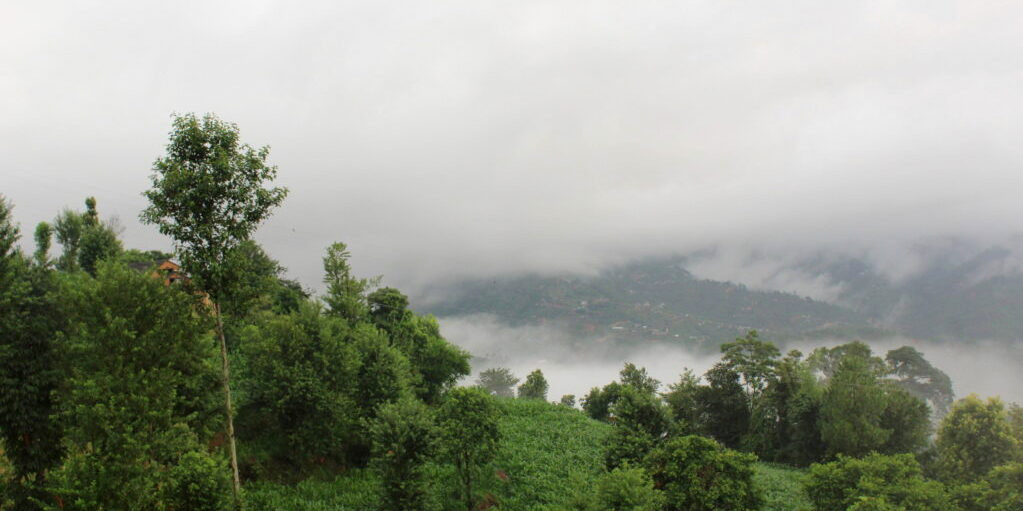
Special Considerations for Off-Season Travel in Nepal:
Weather Preparedness:
-
Monsoon (Summer): Expect heavy rainfall, slippery trails, and potential leeches while trekking. Waterproof gear and insect repellents are essential.
-
Winter: Prepare for cold temperatures, especially at higher altitudes. Warm clothing, thermal layers, and appropriate sleeping gear are necessary.
Health and Safety:
-
Altitude Sickness: Regardless of the season, if you’re trekking at high altitudes, be aware of altitude sickness and take necessary precautions.
-
Travel Insurance: Ensure your travel insurance covers weather-related disruptions and trekking activities, particularly if you plan on high-altitude treks.
-
Flexible Itineraries: Be prepared for flight delays, especially in regions like Lukla, which are prone to weather disruptions. Having a flexible itinerary can reduce stress in such situations.
Choosing the Right Destinations:
-
Monsoon: Opt for treks in the rain shadow areas like Mustang or Dolpo. These regions receive significantly less rainfall.
-
Winter: Focus on lower-altitude treks and cultural tours, as some high-altitude trekking routes may be closed due to snow.
Off-Season Advantages:
-
Less Crowded: Enjoy a more solitary experience with fewer tourists on the trails and at attractions.
-
Lower Prices: Many hotels and services offer off-season discounts, making it a more budget-friendly time to travel.
- Cultural Experiences: Participate in local winter festivals and indoor cultural activities that are often overlooked during the peak seasons.
- Wildlife Viewing: Winter can be an excellent time for wildlife viewing in parks like Chitwan, as the cooler temperatures make animals more active during the day.
- Booking and Reservations: While some accommodations and services may close during the off-season, it’s still advisable to book essential services in advance.
- Local Guidance and Support: Consider hiring local guides or joining guided tours, as they will have better knowledge of the current conditions and can enhance your safety and experience.
Off-season travel in Nepal can be deeply rewarding, offering unique perspectives of the country’s landscapes and culture. With proper planning, flexibility, and awareness of the seasonal challenges, travelers can enjoy a less crowded, cost-effective, and enriching experience. Whether it’s embracing the lush monsoon greenery or the serene winter landscapes, off-season travel in Nepal is for those who seek the road less traveled.
Understanding Nepal's Diverse Climate
Understanding Nepal's diverse climate is crucial for travelers looking to make the most of their visit. Nepal's climate varies dramatically due to its topography and altitude, ranging from tropical in the lowlands to alpine in higher altitudes. This diversity means that different regions of Nepal can experience completely different weather conditions at the same time of the year.
Key Factors Influencing Nepal's Climate:
Altitude:
-
Varied Ecosystems: From the Terai lowlands at the Indian border to the high peaks of the Himalayas, altitude plays a major role in determining local climates.
-
Temperature Variance: As a general rule, temperatures decrease as altitude increases. The Himalayan regions can be extremely cold, while the lowlands remain comparatively warm year-round.
Monsoon Season:
-
Heavy Rains: The monsoon season, from June to August, brings significant rainfall, particularly affecting the southern and central regions of Nepal.
-
Impact on Travel: The rains can cause travel disruptions and make trekking in certain areas challenging.
Seasonal Variations:
-
Spring (March to May): Characterized by warmer weather and blooming flowers, spring is a pleasant time, especially at mid-latitudes.
-
Summer (June to August): Coinciding with the monsoon; hot and wet, especially in the lowlands.
-
Autumn (September to November): Post-monsoon, this is a dry season with clear skies and moderate temperatures, ideal for trekking.
-
Winter (December to February): Cold, especially in the mountains with snowfall, but lower regions remain mild.
Regional Differences:
-
Rain Shadow Areas: Some areas like the Mustang and parts of the Manang Valley lie in the rain shadow of the Himalayas, making them more arid, even during the monsoon.
-
Terai Region: The southern lowlands experience a subtropical climate, with high humidity and temperatures
-
Microclimates: In valleys and mountainous areas, localized microclimates can result in different weather conditions within short distances.
Travel Considerations Based on Climate:
-
Trekking: The best months for high-altitude treks are during the drier and clearer weather of spring and autumn.
-
Cultural Tours: The Kathmandu Valley and other lower altitude areas are more accessible year-round.
-
Wildlife Safaris: The best wildlife viewing in places like Chitwan National Park is during the drier months.
-
Festivals: Consider visiting during major festivals, which often occur in autumn and spring, for a cultural experience.
Nepal's diverse climate offers a range of experiences depending on when and where you travel. From the lush monsoon season to the clear and cool autumn, each season brings its charm. Understanding these climatic variations is key to planning a trip that aligns with your interests, whether it be trekking, cultural exploration, or wildlife viewing. By considering the climate, travelers can ensure a more enjoyable and fulfilling journey through Nepal.
Understanding Nepal's Diverse Climate
Understanding Nepal's diverse climate is crucial for travelers looking to make the most of their visit. Nepal's climate varies dramatically due to its topography and altitude, ranging from tropical in the lowlands to alpine in higher altitudes. This diversity means that different regions of Nepal can experience completely different weather conditions at the same time of the year.
Key Factors Influencing Nepal's Climate:
Altitude:
-
Varied Ecosystems: From the Terai lowlands at the Indian border to the high peaks of the Himalayas, altitude plays a major role in determining local climates.
-
Temperature Variance: As a general rule, temperatures decrease as altitude increases. The Himalayan regions can be extremely cold, while the lowlands remain comparatively warm year-round.
Monsoon Season:
-
Heavy Rains: The monsoon season, from June to August, brings significant rainfall, particularly affecting the southern and central regions of Nepal.
-
Impact on Travel: The rains can cause travel disruptions and make trekking in certain areas challenging.
Seasonal Variations:
-
Spring (March to May): Characterized by warmer weather and blooming flowers, spring is a pleasant time, especially at mid-latitudes.
-
Summer (June to August): Coinciding with the monsoon; hot and wet, especially in the lowlands.
-
Autumn (September to November): Post-monsoon, this is a dry season with clear skies and moderate temperatures, ideal for trekking.
-
Winter (December to February): Cold, especially in the mountains with snowfall, but lower regions remain mild.
Regional Differences:
-
Rain Shadow Areas: Some areas like the Mustang and parts of the Manang Valley lie in the rain shadow of the Himalayas, making them more arid, even during the monsoon.
-
Terai Region: The southern lowlands experience a subtropical climate, with high humidity and temperatures
-
Microclimates: In valleys and mountainous areas, localized microclimates can result in different weather conditions within short distances.
Travel Considerations Based on Climate:
-
Trekking: The best months for high-altitude treks are during the drier and clearer weather of spring and autumn.
-
Cultural Tours: The Kathmandu Valley and other lower altitude areas are more accessible year-round.
-
Wildlife Safaris: The best wildlife viewing in places like Chitwan National Park is during the drier months.
-
Festivals: Consider visiting during major festivals, which often occur in autumn and spring, for a cultural experience.
Nepal's diverse climate offers a range of experiences depending on when and where you travel. From the lush monsoon season to the clear and cool autumn, each season brings its charm. Understanding these climatic variations is key to planning a trip that aligns with your interests, whether it be trekking, cultural exploration, or wildlife viewing. By considering the climate, travelers can ensure a more enjoyable and fulfilling journey through Nepal.
The ideal time to visit Nepal depends on your interests and the experiences you want to have. While spring (March to May) offers colorful scenery and fantastic climbing chances, autumn (September to November) is best for clear skies and comfortable hiking weather. Though hiking is more difficult, the monsoon season (June to August) is ideal for taking in the vibrant vegetation and cultural events. Winter (December to February) is a serene time, ideal for low-altitude walks and less crowded cultural events. Nepal is a year-round destination for many explorers and travelers, as each season offers a distinct chance to discover the nation's natural beauty and rich cultural tapestry.
FAQs for Best Time to Visit Nepal
Q. What is the best time of year to visit Nepal?
A. The best time to visit Nepal is generally during the dry seasons of spring (March to May) and autumn (September to November). These months offer pleasant weather, clear skies, and favourable conditions for trekking and sightseeing.
Q. When is the peak tourist season in Nepal?
A. The peak tourist season in Nepal is during autumn (September to November), when the weather is clear, and the skies are generally unobstructed, offering stunning views of the Himalayas. Spring (March to May) is also a popular time due to mild temperatures and blooming flora.
Q. Is it possible to visit Nepal during the monsoon season?
A. While it's possible to visit Nepal during the monsoon season (June to August), it's not typically recommended for outdoor activities like trekking due to heavy rainfall, muddy trails, and landslides. However, if you're interested in experiencing the lush greenery and cultural festivals, it can still be an interesting time to visit certain regions.
Q. What are the advantages of visiting Nepal during the spring season?
A. Spring (March to May) in Nepal offers mild temperatures, clear skies, and blooming rhododendrons, making it an ideal time for trekking and enjoying the vibrant landscapes. Additionally, many cultural festivals, such as Holi and Buddha Jayanti, are celebrated during this time.
Q. Are there any specific festivals or events that I should consider when planning my visit to Nepal?
A. Nepal is rich in cultural festivals and events throughout the year. Some notable ones include Dashain (September to October), Tihar (October to November), Holi (March), Buddha Jayanti (April/May), and the Everest Day celebrations (May). Experiencing these festivals can offer unique insights into Nepalese culture and traditions.
Q. What should I pack for a trip to Nepal?
A. Packing depends on the time of year and planned activities. For trekking, essential items include sturdy hiking boots, layers of clothing, a good quality backpack, water purification tablets, and a first aid kit. It's also advisable to bring appropriate gear for the altitude and weather conditions.
Q. Is it necessary to obtain any permits or visas before visiting Nepal?
A. Yes, most visitors to Nepal require a visa, which can be obtained upon arrival at the Tribhuvan International Airport in Kathmandu or at various land border crossings. Additionally, certain trekking areas may require permits, such as the Annapurna Conservation Area Permit (ACAP) or the Sagarmatha National Park Permit for Everest region treks.
Q. Are there any health considerations I should be aware of before travelling to Nepal?
A. Travellers to Nepal should consult a healthcare professional regarding vaccinations and medications for preventable diseases such as hepatitis A, typhoid, and malaria (if visiting certain regions). Altitude sickness can also be a concern, particularly for trekkers, so it's important to acclimatise gradually and stay hydrated.
For detail about Nepal Tour and other packages.
If you are looking for different kinds of Nepal Packages, feel free to contact us.
